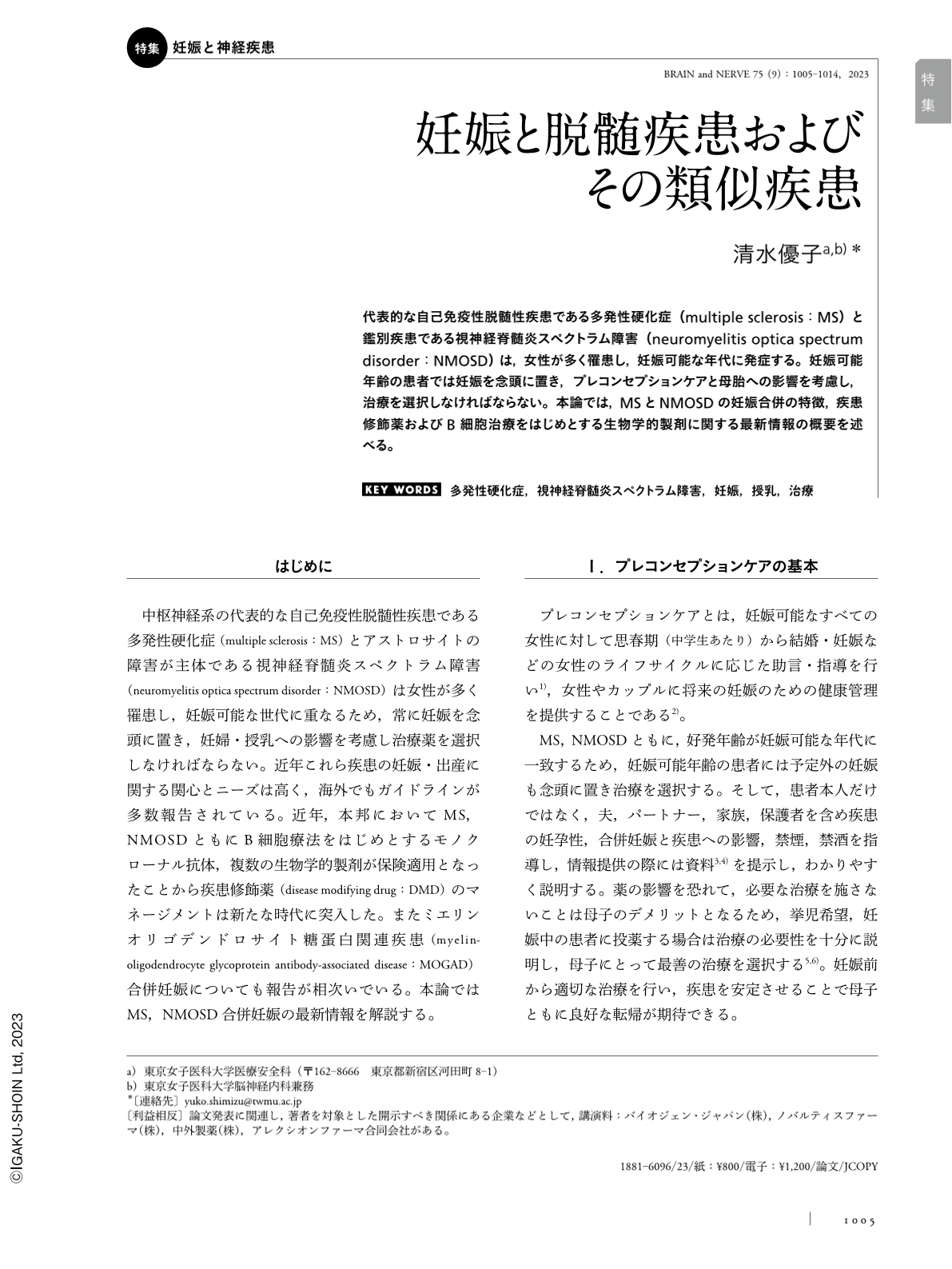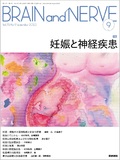Japanese
English
- 有料閲覧
- Abstract 文献概要
- 1ページ目 Look Inside
- 参考文献 Reference
代表的な自己免疫性脱髄性疾患である多発性硬化症(multiple sclerosis:MS)と鑑別疾患である視神経脊髄炎スペクトラム障害(neuromyelitis optica spectrum disorder:NMOSD)は,女性が多く罹患し,妊娠可能な年代に発症する。妊娠可能年齢の患者では妊娠を念頭に置き,プレコンセプションケアと母胎への影響を考慮し,治療を選択しなければならない。本論では,MSとNMOSDの妊娠合併の特徴,疾患修飾薬およびB細胞治療をはじめとする生物学的製剤に関する最新情報の概要を述べる。
Abstract
Multiple sclerosis (MS) and neuromyelitis optica spectrum disorder (NMOSD) are two prevalent autoimmune diseases of the central nervous system that predominantly affect women during childbearing age. Patients of childbearing age affected by conditions, such as MS and NMOSD, should consider the potential implications of pregnancy. The selection of treatment options should be carefully evaluated, considering preconception care and assessing the risk-benefit profile for both the mother and fetus. In recent years, there has been growing interest and need to address pregnancy and delivery in the context of these diseases, leading to the development of several internationally reported guidelines. The management of MS and NMOSD has entered a new era in Japan, with the inclusion of monoclonal antibodies and various biological agents, including B-cell depletion therapy, which is covered by insurance. Furthermore, there has been increasing focus on myelin oligodendrocyte glycoprotein antibody-associated disease (MOGAD), which has been reported to be associated with pregnancy. In this article, we aim to discuss the characteristics of MS, NMOSD, and MOGAD in the context of pregnancy, while providing updated insights on managing pregnancy and lactation with disease-modifying drugs and biologic agents.

Copyright © 2023, Igaku-Shoin Ltd. All rights reserved.


